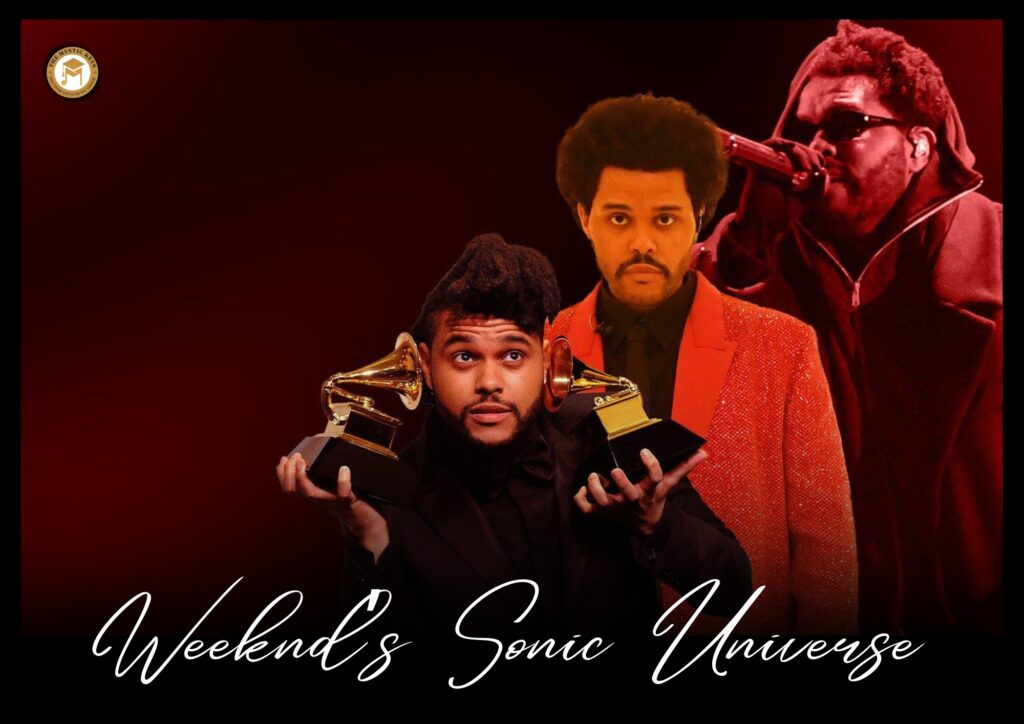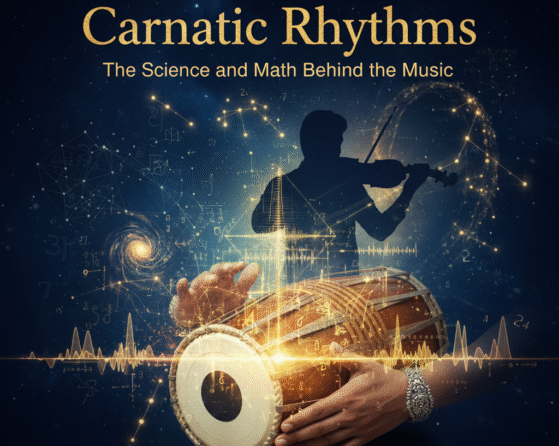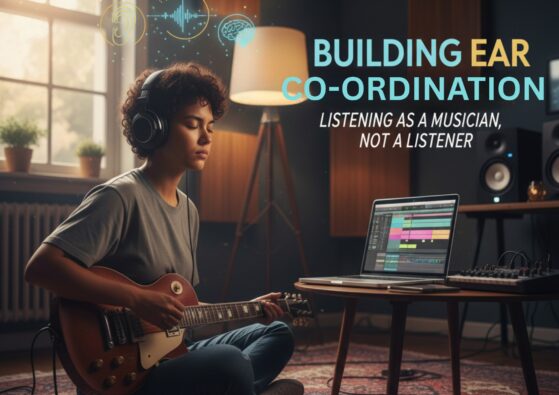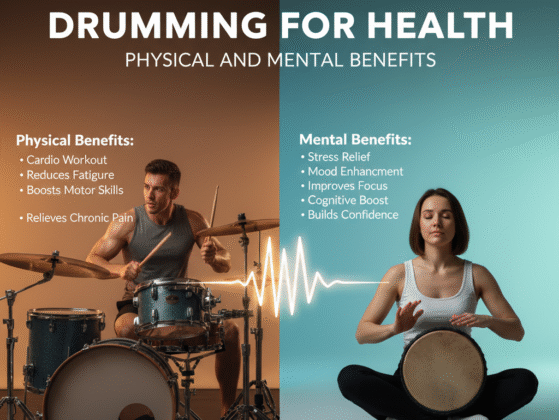The Weeknd’s Sonic Universe | How He Redefined Modern R&B
Few artists in the 21st century have reshaped a genre as completely as Abel Tesfaye, known as The Weeknd. His work forms The Weeknd’s Sonic Universe—a realm where R&B, pop, electronic, and alternative sounds merge into a seamless whole. Defined by cinematic atmosphere, bold narratives, and fearless dives into the darker edges of human emotion, his music blurs all boundaries. Smooth vocals glide over pulsating synths, retro drum machines fuse with futuristic textures, and every transition feels deliberate, drawing listeners deeper until the outside world disappears.
Since his anonymous emergence in 2011, The Weeknd has transformed from a mysterious figure releasing free mixtapes online into one of the most streamed artists in history. But his influence extends far beyond streaming numbers. He has reshaped modern R&B into a more expansive, hybrid genre—one that feels as comfortable under neon lights as it does in the intimacy of a headphone listen at 3 a.m.
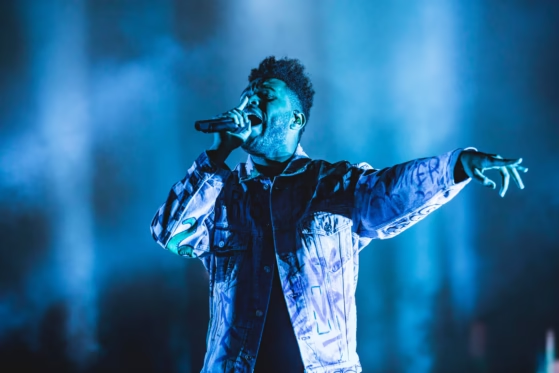
The Landscape Before He Arrived
In the late 2000s and early 2010s, R&B found itself in a period of transition. Mainstream acts gravitated toward clean, radio-friendly love songs—smooth, polished, and crafted for mass appeal. Meanwhile, the underground scene moved in the opposite direction. Blog-era musicians blended indie samples with unconventional rhythms and ambient textures, exploring sounds far removed from traditional chart formulas.
The divide between these two worlds was clear. R&B could choose polish and emotional accessibility, or it could choose experimentation and niche appeal. There was little middle ground. It was into this space that The Weeknd’s Sonic Universe emerged, bridging the gap with an approach that was both daring and inviting. His music carried the shadowy mood and layered textures of the underground while maintaining the melodic pull of mainstream hits.
From the very beginning, his sound was unmistakable. The trilogy of mixtapes—House of Balloons, Thursday, and Echoes of Silence—ushered in an R&B stripped of its bright edges. He steeped it in minor keys, wrapped it in atmospheric production, and infused it with an unflinching, voyeuristic honesty. This combination made his work feel both intimate and cinematic, drawing listeners into a fully formed world.
It was here that the shift began. The Weeknd wasn’t simply contributing to R&B—he was expanding its map, charting a territory where darkness and beauty could coexist, and where every song felt like a piece of a larger, interconnected story.
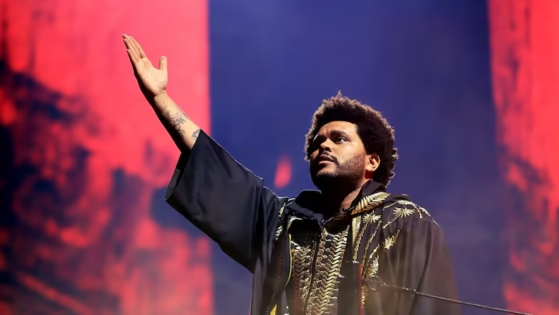
The Sonic DNA of The Weeknd’s Music
The Weeknd’s Sonic Universe is built from a carefully curated palette of tones, textures, and rhythms. Each element flows seamlessly into the next, creating smooth transitions that draw listeners deeper into his world. Layers of synths, bass, and percussion interact effortlessly, while vocals and harmonies glide above them, guiding you through a rich, immersive experience.
Tonal Palette
Minor keys dominate his work, creating a sense of mystery and melancholy.
Modal shifts keep the harmonic landscape unstable yet seductive.
Analog-style synth pads provide warmth or cold detachment depending on the song’s mood.
Deep sub-bass anchors the music, often more felt than heard.
Rhythm and Groove
Mid-tempo beats between 70–110 BPM dominate, often feeling slower thanks to half-time drum patterns.
Trap-inspired hi-hats blend with retro drum machine snares, creating a unique hybrid groove.
Rhythmic spaces are intentionally left open, allowing reverbs and synth echoes to carry emotional weight.
Vocals
His falsetto is one of his most defining traits—soft, airy, and capable of cutting through dense production.
Harmonies are stacked like layers of synths, often creating a pad-like effect.
His delivery blends vulnerability with detachment, giving his storytelling a cinematic, almost voyeuristic quality.
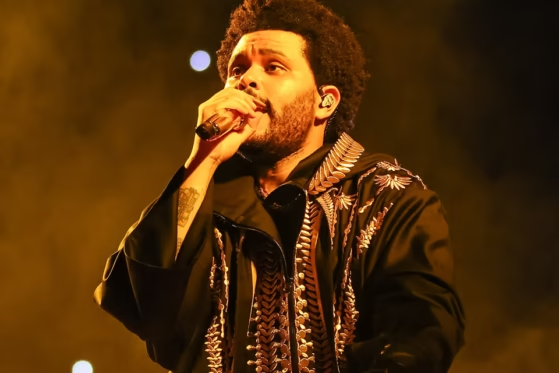
The Collaborators Who Helped Shape His Universe
The Weeknd’s career has been marked by partnerships with producers and artists who have amplified his vision, allowing each project to evolve naturally into the next. These collaborations don’t just add new sounds—they create bridges between eras, weaving fresh influences into his signature style while keeping his universe cohesive.
Illangelo and Doc McKinney were the architects of his early sound, building haunting minimalism and moody textures that felt intimate yet vast.
Max Martin, one of pop’s most successful hitmakers, helped refine his hooks into radio-ready anthems without sanding away the darkness.
Daft Punk introduced him to a sleeker electronic sheen, giving songs like “Starboy” and “I Feel It Coming” a futuristic disco feel.
Conceptual collaborators such as Jim Carrey in Dawn FM helped turn albums into immersive experiences, complete with narrative arcs and character voices.

Themes and Storytelling | Glamour with a Hangover
At the heart of The Weeknd’s Sonic Universe runs a constant tension between allure and emptiness. Desire threads through his music, but so do the shadows it leaves behind. He sings of indulgence, yet always hints at its cost. Love intoxicates, yet often destroys. Fame glitters in his world, but its glow feels cold, even isolating.
This duality shapes the way his stories unfold. Listening feels like drifting through a neon-lit city at night. Temptation calls from every corner, its beauty almost magnetic. Yet just beneath the glow, regret waits, following every step like a silent echo. The listener is pulled forward, unable to turn away, caught between the promise of escape and the weight of consequence.
Where traditional R&B tends to idealize romance, The Weeknd moves beyond the surface. He doesn’t stop at the thrill of the night; he leads you into the stillness of the morning after. In his universe, highs and lows are inseparable, and each song feels like a passage through both ecstasy and its inevitable fall.
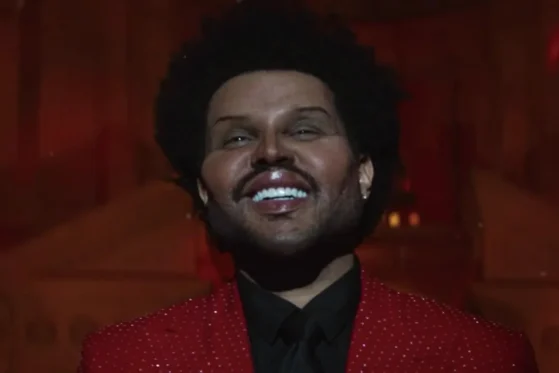
Era-by-Era Evolution
The Mixtape Nocturnes (2011)
The Trilogy mixtapes established his signature aesthetic—shadowy beats, cinematic atmospheres, and deeply confessional lyrics. From there, the air of anonymity around his identity deepened the intrigue, turning each track into more than just music. It felt like a secret passed between listeners, drawing them further into his world.
Breakout and Crossover (2013–2016)
Albums like Kiss Land and Beauty Behind the Madness marked a turning point, introducing a more polished version of his sound while keeping its haunting core. From there, hits like “Can’t Feel My Face” proved he could rule the pop charts yet still carry his signature nocturnal edge, seamlessly bridging underground moodiness with mainstream appeal.
The Synthwave Ascendancy (2018–2022)
With After Hours, he leaned fully into 80s-inspired synth textures, moving seamlessly from moody minimalism to explosive, stadium-ready energy. Gated snares cracked against arpeggiated basslines, while shimmering pads wrapped the sound in a retro-futuristic glow. It wasn’t just a nod to the past—it was R&B rebuilt for a cinematic, arena-sized future.
Conceptual Storytelling (2023–Present)
Dawn FM pushed the boundaries further, framing the album as a fictional radio broadcast that guides listeners through a purgatory-like afterlife. This concept didn’t just add depth—it connected each track into a continuous journey, blurring the line between album and narrative. It became both a bold artistic statement and a fresh, innovative format for the streaming age.
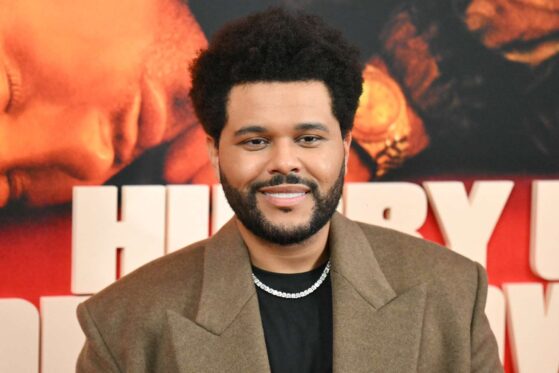
How He Changed the Rules of R&B
The Weeknd’s Sonic Universe has redefined modern R&B, leaving a mark so deep it’s difficult to picture the genre without his influence. What began as an unconventional style evolved into a blueprint—blending cinematic atmosphere, bold narratives, and a fusion of R&B, pop, electronic, and alternative—to push the genre in a new direction.
He began by bridging worlds, weaving synthwave’s glowing textures into R&B’s soulful foundation. This created a sound that felt cinematic yet modern, fitting seamlessly in both high-energy clubs and moody, art-house spaces.
From there, he shifted the genre’s emotional center. Vulnerability, melancholy, and complexity were no longer niche—they became chart-toppers. This change expanded what mainstream audiences expected from R&B.
His artistry then moved beyond sound. Through tightly connected visuals—videos, performances, and album art—each release became a chapter in a larger story, pulling listeners deeper into his universe.
When streaming reshaped the industry, he adapted with intent. He built songs for replay value without sacrificing depth, striking a balance that not only fueled his success but set a standard others now follow.
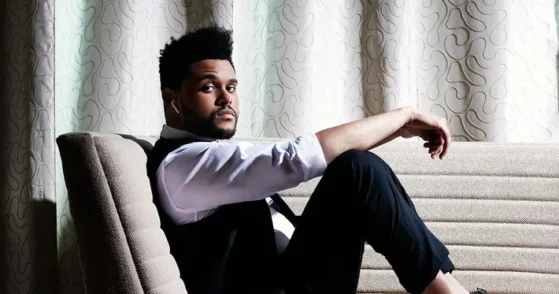
The Technical Craft Behind the Atmosphere
Behind the emotion, The Weeknd works with sharp technical precision, guiding each element into place. He begins with sparse arrangements, allowing every instrument the room to breathe. This openness creates a canvas where even the smallest details can shine—a drifting synth that lingers in the air, a crisp snare that cuts through the mix, a faint echo that fades into the distance.
As the foundation takes shape, the basslines step in with purpose. They hold the rhythm steady, yet also tell their own melodic story. Layer by layer, reverb and delay expand the space, stretching the sound outward until it surrounds the listener completely. The effect is more than auditory—it feels like stepping through a doorway into the song’s world.
With the atmosphere set, he begins to build tension. Harmonies and chord progressions often remain unresolved, nudging you forward, making you want to know what comes next. And just as the groove feels familiar, the landscape shifts. Every 8 to 16 bars, he introduces a small but deliberate change—a sudden harmony, a subtle filter sweep, a quick drum fill. These moments act like turning corners in a story, keeping the song alive, evolving, and pulling
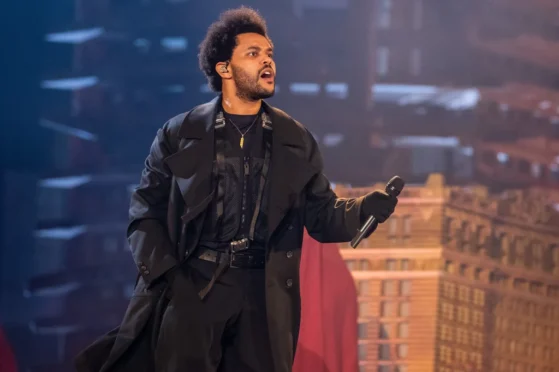
Influence Across the Industry
The Weeknd’s fingerprints run deep through modern R&B and pop, shaping the way the genres sound, feel, and even look. Emerging artists weave his synth-heavy production into their own work, while established acts lean toward the darker tones and cinematic arrangements he helped define. His influence doesn’t stop at the studio—it flows naturally onto the stage, where his vision comes fully alive.
When he steps into an arena, the performance becomes more than music—it transforms into an entire world. Storytelling threads through every detail, from set design and lighting to choreography and visuals, each element feeding into the next. Scenes shift seamlessly, drawing audiences deeper into the experience until they’re no longer just watching, but inhabiting his universe. Through this, The Weeknd hasn’t simply raised the bar for live R&B—he’s rewritten its blueprint, proving a concert can unfold with the richness and immersion of a cinematic journey.
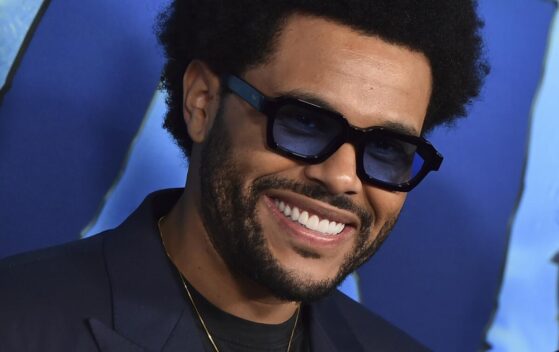
The Myth and the Man
What makes The Weeknd’s Sonic Universe so distinct is his devotion to narrative continuity. He doesn’t just release albums—he crafts chapters in an unfolding story. One project eases into the next, carrying the same character through shifting settings and escalating conflicts. Desire turns to temptation, fame to self-destruction, all connected as part of a larger arc.
Instead of reinventing for novelty, he evolves with purpose. Each release builds on the last—sounds stretch wider, emotions cut deeper, visuals grow more intricate. The journey feels deliberate, like following the same figure down an endless neon-lit road, each turn revealing a sharper, richer scene.
This flow transforms his catalog into a cinematic continuum. Songs act as puzzle pieces, linking past to present. Eras fit together seamlessly, revealing more of the story with each step. In his hands, music becomes more than sound—it’s a living world that draws you in and stays with you long after it ends.
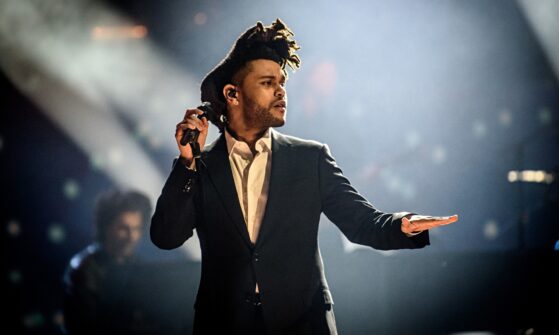
Conclusion | The Architect of a New R&B
The Weeknd has reshaped R&B, expanding it into a realm that’s cinematic, visually cohesive, and emotionally layered. His music glides from whispered confessions to sweeping, arena-ready moments, carrying listeners through a world where beauty and darkness are inseparable. One song eases into the next, each melody deepening the mood, each beat adding color to a neon-lit storyline.
As his vision unfolds, the genre itself shifts. Vulnerability doesn’t just appear—it stands proudly beside towering production, while pop hooks weave naturally into experimental textures. The result is a sound both intimate and immense, pulling you in close even as it fills the air around you.
If you’re ready to create music that tells its own story, join The Mystic Keys, where technique meets imagination to turn raw ideas into fully realized sonic worlds.
For more information and exciting resources about learning music, visit our website at The Mystic Keys. For more music content and exciting offers follow us on
Facebook, Instagram, YouTube, LinkedIn, Twitter, Pinterest, and Threads,


